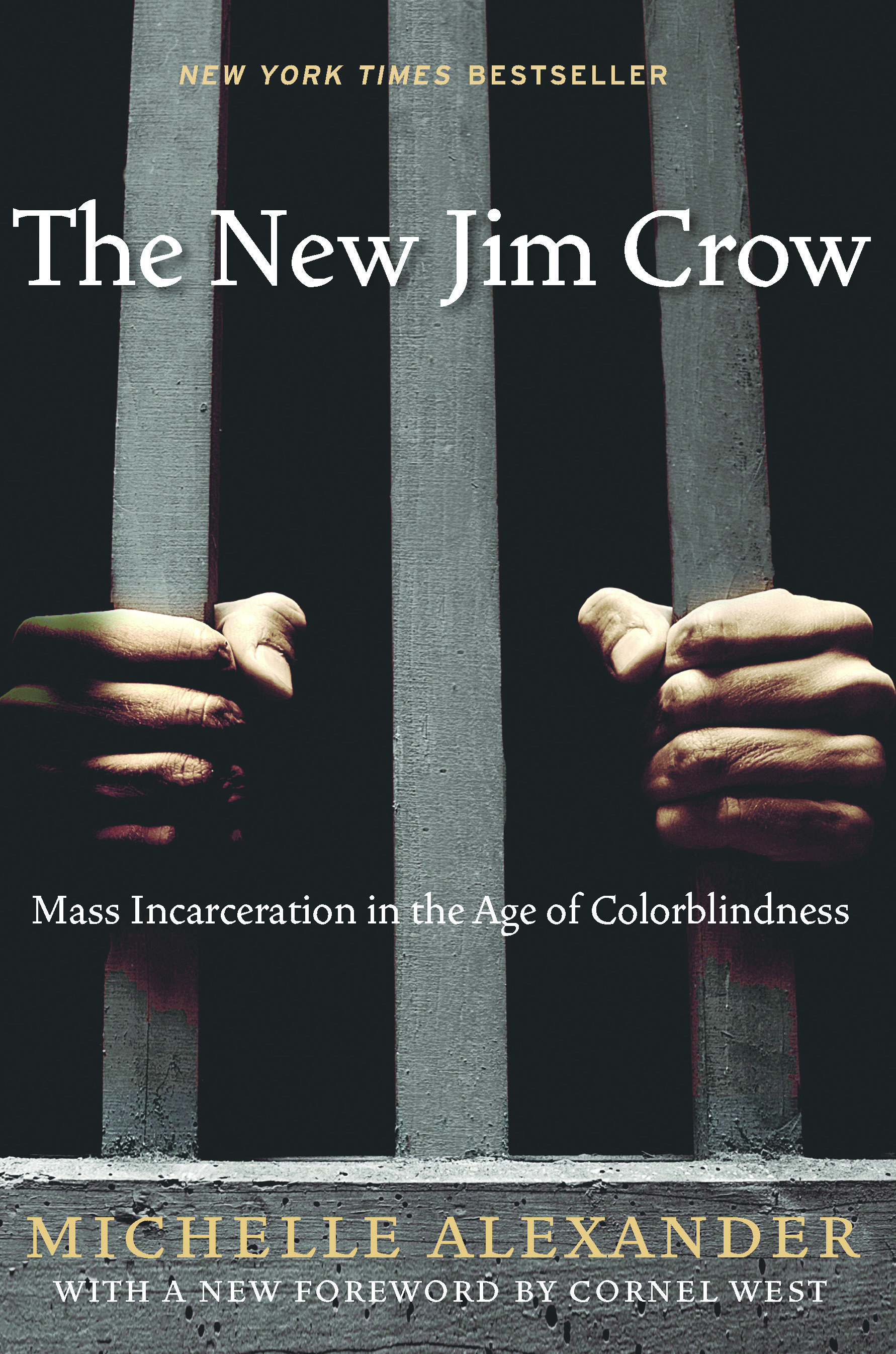This groundbreaking book by lawyer, advocate and scholar Michelle Alexander — in a new paperback edition with a foreword by Cornel West — reframes race relations in America by examining the insidious effect of mass incarceration of African-Americans since the War on Drugs began. In our “colorblind” society that cannot discriminate by race, says Alexander, “it is perfectly legal to discriminate against criminals.”
 When she was a civil rights lawyer handling affirmative action and employment discrimination cases, Alexander dismissed any notion of an invisible “racial caste system.” Only after becoming director of the Racial Justice Project of the American Civil Liberties Union (ACLU) in California did she suspect that mass incarceration was “a stunningly comprehensive and well-disguised system of racialized social control that functions in a manner strikingly similar to Jim Crow,” she writes.
When she was a civil rights lawyer handling affirmative action and employment discrimination cases, Alexander dismissed any notion of an invisible “racial caste system.” Only after becoming director of the Racial Justice Project of the American Civil Liberties Union (ACLU) in California did she suspect that mass incarceration was “a stunningly comprehensive and well-disguised system of racialized social control that functions in a manner strikingly similar to Jim Crow,” she writes.
Media coverage of the crack cocaine “epidemic” in the 1980s and 1990s convinced many that President Ronald Reagan launched the War on Drugs in 1982 to stem the crack tide. Yet drug crime was declining, and crack did not emerge until 1985.
What was the drug war’s impact? “In less than 30 years, the U.S. penal population exploded from around 300,000 to more than 2 million,” mostly through drug convictions, says Alexander. Now the U.S. incarceration rate is six to 10 times higher than other industrial countries: 750 people in prison for every 100,000 in the population. The United States holds the world record in racial minorities imprisoned: “three out of four young black men” in Washington, D.C., “can expect to serve time in prison.” Similar incarceration rates occur “in black communities across America.”
In addition, she notes:
• People of all races “use and sell illegal drugs at remarkably similar rates.”
• “White youth are more likely to engage in drug crime than people of color.”
• Black men are imprisoned “on drug charges at rates 20 to 50 times greater than those of white men.”
Colorblindness was so complete, U.S. citizens didn’t notice that this war victimized mostly black males caught with small amounts of marijuana and cocaine. White people with the same drugs were ignored.
Black women, however, did notice the rarity of men in their communities; in 2002, black women outnumbered noninstitutionalized black men by 3 million, according to the U.S. Census Bureau.
Few appreciate “the enormity of the crisis at hand,” Alexander laments. Her book argues that “mass incarceration is, metaphorically, the New Jim Crow and that all those who care about social justice should commit themselves to dismantling this new racial caste system.”
Alexander builds her case by revisiting America’s history of race relations since slavery. Periods of racial tolerance did occur, but by the turn of the 20th century, Southern segregation laws disenfranchised and ostracized blacks in “virtually every sphere of life,” says Alexander. This “racial order” was called Jim Crow – named after a minstrel show character.
After “the death of Jim Crow” – often attributed to the Supreme Court’s 1954 Brown v. Board of Education decision – the 1960s Civil Rights Movement evolved into the Poor People’s Movement to redistribute economic and political power. In response, conservative whites sought “a new system of control” with “race-neutral language” that would put blacks “back in their place, without being exposed to the charge of racism,” says Alexander. Created through “law and order,” a “new racial caste system” seeded the mass incarceration at the heart of Alexander’s exposé.
Each president who followed Reagan forged his own version of the “get tough on crime” regime. Although 90 percent of the unprecedented millions locked up for drug offenses “were black or Latino,” this mass incarceration “was explained in race-neutral terms,” she says. “The New Jim Crow was born.”
“Today a criminal freed from prison has scarcely more rights, and arguably less respect, than a freed slave or a black person living ‘free’ in Mississippi at the height of Jim Crow,” Alexander says. His criminal record “authorizes precisely the forms of discrimination we supposedly left behind – discrimination in employment, housing, education, public benefits, and jury service.” Such “legalized discrimination” stigmatizes all black men, notes Alexander, “whether they have ever been to prison or not.” It’s especially difficult for youth; “young + black + male” equals “reasonable suspicion” in “schools and public spaces.”
Few Americans, including the civil rights community, “recognize mass incarceration for what it is: a new caste system thinly veiled by the cloak of colorblindness,” says Alexander. “Our collective denial is a major stumbling block to public understanding of the role of race in our society,” which “sharply limits the opportunities for truly transformative action.”
Alexander points out that to “stop debating crime policy as though it were purely about crime,” we must talk about race – which makes everyone uncomfortable. “Colorblindness, though widely touted as the solution, is actually the problem,” she contends. Her detailed recommendations for “embracing a permanent commitment to color consciousness” are both compelling and courageous.
Finally, Alexander reminds us that in 1968, Martin Luther King Jr. called for “racial justice advocates to shift from a civil rights to a human rights paradigm” that would lead to a multiracial democracy.
Those who have not encountered Alexander’s reasoning and evidence firsthand might be skeptical of some of her claims. One must witness how skillfully she builds her case with conviction and clarity, urging all races to work toward repairing our broken nation. Michelle Alexander’s courageous assessment allows us to inquire about uncomfortable truths and to work out how to live freely together, conscious of our many colors.
Contact: (212) 629-8802, www.thenewpress.com.


























